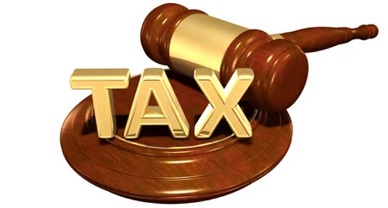Analysis of the rejection of Lumacaftor (Polymorph) patent application in India
We have been receiving requests from our Pharma clients/readers of the blog for the analysis of the decision/ facts that led to the rejection of Lumacaftor (Polymorph) patent application in India since last year.
Here is our take:
Details of the Patent Application and important dates:
| Patent application number in India | 2056/KOLNP/2010 |
| Title of the invention | SOLID FORMS OF 3-(6-(1-(2,2-DIFLUOROBENZO[D][1,3] DIOXOL-5-YL) CYCLOPROPANECARBOXAMIDO)-3-METHYLPYRIDIN-2-YL) BENZOIC ACID |
| Applicant | VERTEX PHARMACEUTICALS INCORPORATED |
| International application number/ International filing date | PCT/US2008/08545/04/12/2008 |
| Priority Application Number/ Priority date | US61/012,16207/12/2007 |
| National phase Filing date | 04/12/2008 |
| Publication date | 03/09/2010 |
| Request for examination date | 25/11/2010 |
| Pre-Grant Opposition under section 25 (1) | 19/02/2011 |
| First examination report Date | 20/08/2014 |
| Date of communication of outstanding objections | 01/03/2016 |
| Date of hearing after failing to put the application in condition of allowance | 18/03/2016 |
| Date of the decision of rejection | 31/03/2016 |
Application Area:
Lumacaftor is given with another active ingredient Ivacaftor in the treatment of cystic fibrosis which is caused by F508del mutation in the cystic fibrosis transmembrane conductance regulator (CFTR) protein.
Facts of the case:
First Examination Report (FER) was issued on 20/08/2014 which not only objected claims based on the prior arts cited in International Preliminary Report on Patentability (IPRP) corresponding to PCT application but also used section 3 (d), 3 (i), 3 (n) of the Patents Act, 1970, and procedural grounds for objection. As the FER was issued on 20/08/2014 (before 16/05/2016), a period of twelve months was allowed to put the application in condition of allowance. The controller found the application not to be in a condition of allowance even after 12 months and communicated the objections on 01/03/2016. Finally, a hearing was held on 18/03/2016. As reported in the decision of controller dated 31/03/2016, “There were nine (09) objections mentioned in the hearing letter including major technical objections on the grounds of novelty, inventive step and non-patentability of the claimed subject matter u/s 3(d) of the ‘Act’.” Section 3 (d) has been reproduced below for the reference: the mere discovery of a new form of a known substance which does not result in the enhancement of the known efficacy of that substance or the mere discovery of any new property or new use for a known substance or of the mere use of a known process, machine or apparatus unless such known process results in a new product or employs at least one new reactant. Explanation.—For the purposes of this clause, salts, esters, ethers, polymorphs, metabolites, pure form, particle size, isomers, mixtures of isomers, complexes, combinations, and other derivatives of known substance shall be considered to be the same substance, unless they differ significantly in properties with regard to efficacy;
Analysis of the rejection decision:
Dr. I. S. Bhattacharya, attorney of the applicant, who attended the hearing, relied on the technical data filed an affidavit along with reply statement in respect of pre-grant opposition already filed under section 25(1) for the instant application to argue that form 1 of Lumacaftor ought to be considered be Novel and Inventive. She asserted that better pharmacokinetic properties / superior bioavailability of the formulation of claimed polymorphic Form I compared to the hydrochloride salt of the compound were enough to win the Patent. The controller in response declined to accept the arguments on the ground ‘Anything beyond the disclosure of complete specification is not acceptable’ as the technical data was not part of the complete specification yet. The technical details were also rebuffed on the ground that different pharmacokinetic properties / superior bioavailability results were natural results of comparison of Form I (free solid) with hydrochloride salt of the same compound. He further opined that better bioavailability does not necessarily lead to better efficacy. Based on these grounds, the controller went on to reject the Patent Application under section 15. The controller also took into consideration the pre-grant opposition that had also been filed under section 25(1) by Indian Pharmaceuticals Alliance, Mumbai for the instant application. The controller did not conduct a separate hearing under section 25 (1) as the grounds and prior arts were incorporated in the hearing letter and were heard on 18/03/2016. The controller accepted the petition under section 25 (1) while refusing the grant of the patent application no. 2056/KOLNP/2010.


